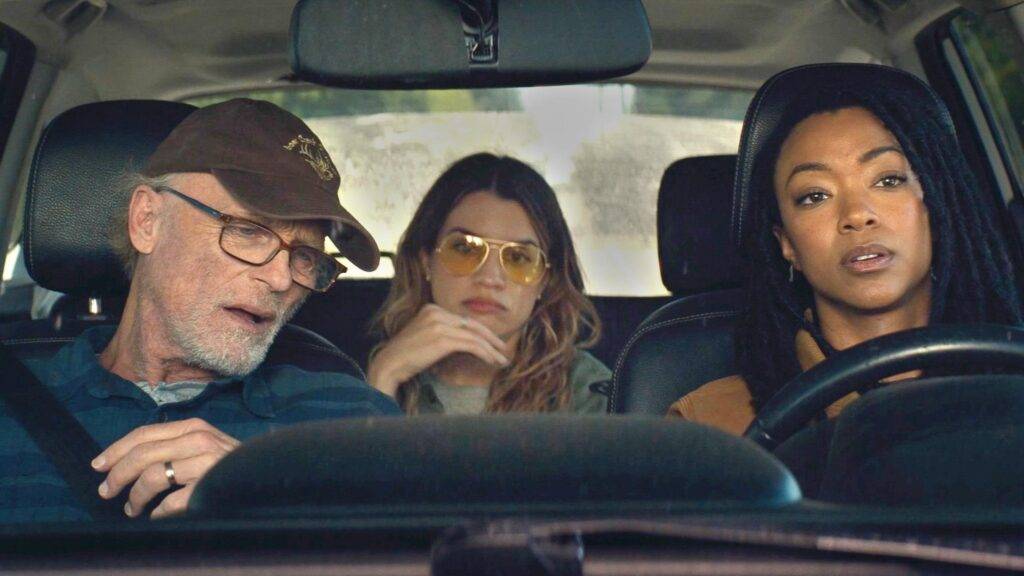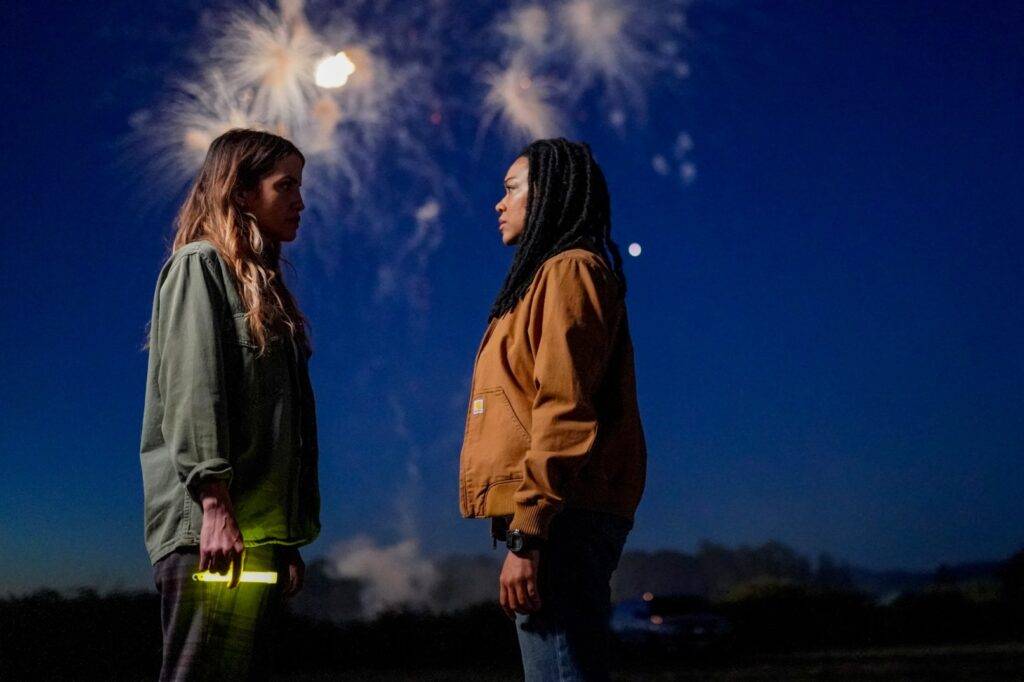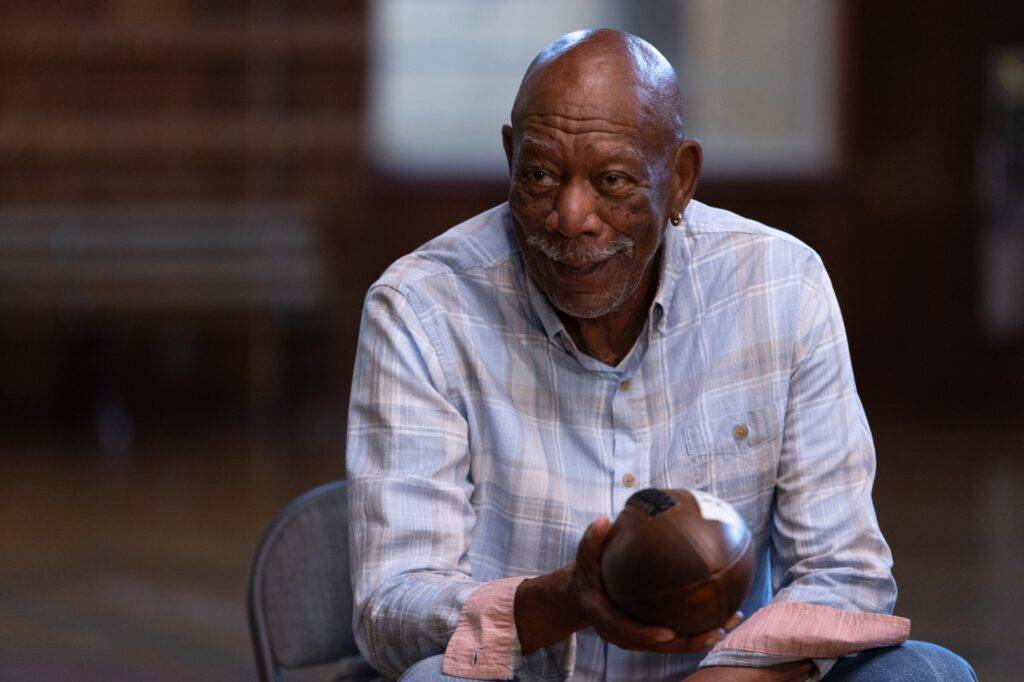MY DEAD FRIEND ZOE – More than a “Movie” (Interview with Kyle Hausmann-Stokes)
From my conversation with director Kyle Hausmann-Stokes, one thing became clear: My Dead Friend Zoe is more than just a movie. It’s an exploration of Hausmann-Stokes’ personal experiences as an Iraq War veteran and the post-traumatic pain and growth that can result. But, it isn’t only his story. It belongs to every person who has lived through trauma, particularly those who have been unable to access the resources they need or haven’t felt comfortable seeking them out. It is a deliberate dismantling of numerous tropes often applied to military veterans, and an effort to disrupt the industry’s norms, from production to distribution. It’s also a film with 90% of its cast made up of veterans, funded by everyday folks who wanted to contribute to something greater than themselves.
Normally, I would delve more deeply into the screenplay, cinematography, and the nuances of directorial decisions—both those that succeeded and those that may have fallen short. But at a time when critical programs for veterans dealing with trauma face cuts or even extinction, it’s important to recognize that My Dead Friend Zoe is bigger than any one film. It’s a call for awareness and a push for meaningful change. As Hausmann-Stokes himself puts it, this project “is a movie of the people, of the veterans, and a movie that is trying to give back”.
The Autobiographical Nature of My Dead Friend Zoe

Adam Manery:
As a U.S. Army veteran, how much of this film is rooted in your own lived experiences?
Kyle Hausmann-Stokes:
I was due to leave the Army in 2004, and I was planning to go to college. We got a stop-loss (involuntary extension of a service member’s active duty service) because they needed more folks at this time. While my plans were changing and I was getting ready to deploy to Iraq, my colonel called me into his office one fateful night and said, “Sergeant, I’ve seen your films.” I thought I was in big trouble because I wasn’t supposed to be making films, and you don’t want to be in the colonel’s office ever anyway. He said the opposite of what I thought. He said they were good, meaningful, and important. So he made arrangements for me – and only me – to be exempt from the stop-loss. The way I was going to pay it back, by not deploying with my battle buddies, was by finding the best film school in the world, honing my craft, and then telling the soldier’s story.
That’s what I did. I made my way to USC two and a half years later, and film school was about to start. That’s when I was recalled back into the Army, because the war was not going well. I had to put film school on hold for 18 months, cut my hair, and deploy to war. Then I came back. It was meant to be. That’s how it was meant to be. That’s where the story comes from. The story’s not “kind of” autobiographical – it’s very autobiographical. Everything in it is about 93% my real life, real people, all that stuff. Of course, I changed some small things. I changed the gender of the character who plays me, and I have reasons for that.
Allowing Women to Take the Lead and Challenging Veteran Tropes

AM:
As you mentioned, you chose to have two women as the leads in My Dead Friend Zoe. What led you to this decision?
KHS:
After film school, I was still a soldier on a mission. I was telling military veteran stories. It’s my charge, my passion, and ultimately, my calling. I did a campaign for the Department of Veterans Affairs, our veterans’ hospital here in the States, and I directed a four-year-long campaign called Make the Connection. It’s an amazing resource – a website that still lives. It’s like a library of short-form videos, and I’m proud of it. I interviewed hundreds of veterans in every major U.S. city, and half of them were women. I was completely blown away by their stories and educated by seeing how they did everything the guys did.
At that moment, since I’m such a cinephile and had watched all military veteran films – usually straight white guys – I realized that, although the majority of the military may look like that, it doesn’t mean those are the only stories to tell. Having experienced this for four years, I made a promise to myself that if I got the opportunity, I would tell my story, but would also tell other people’s stories. I left room for others to fill in.
AM:
Gender was one way you challenged expectations in a veteran-centered project. With so many military tropes out there, what else was important for you to do differently?
KHS:
I think this is no different than anybody who comes from a minority group. When you get the chance to do it yourself, or you’ve earned it because you’ve had to fight – man, it’s been a fight to get here – you just say, “Great. Here are the ten tropes I’m going to explode with a baseball bat,” and it feels really good. It’s easy. My cast is 90% veterans, including Morgan Freeman, so that part was fun. I also wanted to include so many messages in the film – so many social messages about mental health, grief, loss, and moving on, but really on the uplifting side: post-traumatic growth.
“You are not broken or weaker because of bad things that happen. You’re stronger because of it. Scar tissue is stronger than skin.”
More than anything else, I wanted to communicate to the country and the world that veterans – regardless of whether you served in combat or not, or whether you have a sad story or not – you are not broken or weaker because of bad things that happen. You’re stronger because of it. Scar tissue is stronger than skin. That’s what I wanted people to take away more than anything else. I’m trying to popularize that idea of “post-traumatic growth”, and that’s how I feel. I’m a product of the things that happened. We all are, and that includes the bad stuff too.
A Cast of Ed Harris, Morgan Freeman, Sonequa Martin-Green, and More

AM:
Tell me more about this cast. Most first-time feature directors can’t bring on folks like Sonequa Martin-Green and Natalie Morales – let alone the legendary Ed Harris and Morgan Freeman. How did this come together?
KHS:
I’ve been working at this for a very long time, trying to get to this point. I was prepared, took it seriously, and was determined. I’m not saying this to pat myself on the back – it was almost out of desperation. It was a Hail Mary. I made a short film, “Merit x Zoe,” as a proof of concept, which I made a year or two after writing the feature and trying to get it made at all these different places.
“I’m not saying we’re trying to break the model, but we’re doing things differently. It is a movie of the people, of the veterans, and a movie that is trying to give back to people.”
Then I wrote letters. I took a lot of time to write five or six paragraphs. We started with Ed Harris. He was the first person we went out to, which was on purpose; that’s my grandfather’s character, so I had more to say. I wrote letters to every member of the cast. I wasn’t really stroking their egos – because that happens enough – it was more like, “I want to make something entertaining, funny, and heartfelt, but we also have these three nonprofit impact partners. We’re going to tell a message, it’s going to be a call to action, and we’re going to try to help people. Do you want to join me?”
Disrupting Traditional Production with Legion M. and Travis Kelce

AM:
You have approached production and distribution in a “disruptive” way. You’ve worked with new-age companies like Legion M. and have also been able to add names like Travis Kelce as executive producers. What has their impact been?
KHS:
I’m so grateful to Legion M. They’ve been a pleasure to work with. They’re a disruptor company, similar to Kickstarter, but that’s not even a fair comparison because they’re a legion of over 150,000 members. Anybody can be a member of Legion M. They find projects, present them to the Horde – to the Legion – and then people invest. They don’t donate; they invest $100, $2,000, or even $25,000, and become an investor in the film. In the end credits, everybody who invested has their name there. It’s a few hundred names, and that’s cool as hell. They were invited to set and got leaks of the film and other things like that. So we started the fan base early. That has been amazing with Legion M. We raised a significant portion of the budget from everyday movie lovers who also want to support veterans. Then Travis Kelce came on when we overlapped with one of his team through one of our producers, Ray Maiello. That was surreal – to find out that Travis is a big supporter of veterans and the military. Again, we were very prepared: “Here’s the deck, here’s the short, here’s the cast.” We had all the pieces.
Now, in distribution, we’re using Legion M to go back to our fans. We just released a pay-it-forward campaign through the Bob Woodruff Foundation, and we’re already collecting money. One hundred percent of the money collected will be used on tickets for veterans. We’re doing community screenings. I’m not saying we’re trying to break the model, but we’re doing things differently. It is a movie of the people, of the veterans, and a movie that is trying to give back.
I’ll close it with this: I hope people actually go to theatres. People get charged up and share things, but to pay 12 bucks and go to a theater – that’s how they can join us in showing Hollywood. What I’ve learned inside this distribution model is that opening weekend is everything. Friday, Saturday, Sunday – early on, if people go, then we’ll get 700 screens nationwide and many more in Canada. But if you wait until streaming, you’re not helping us; you’re not supporting us. We hope we get people out to see this movie.
Learn More About My Dead Friend Zoe and Their Mission
Official Website
Legion M
Bob Woodruff Foundation




